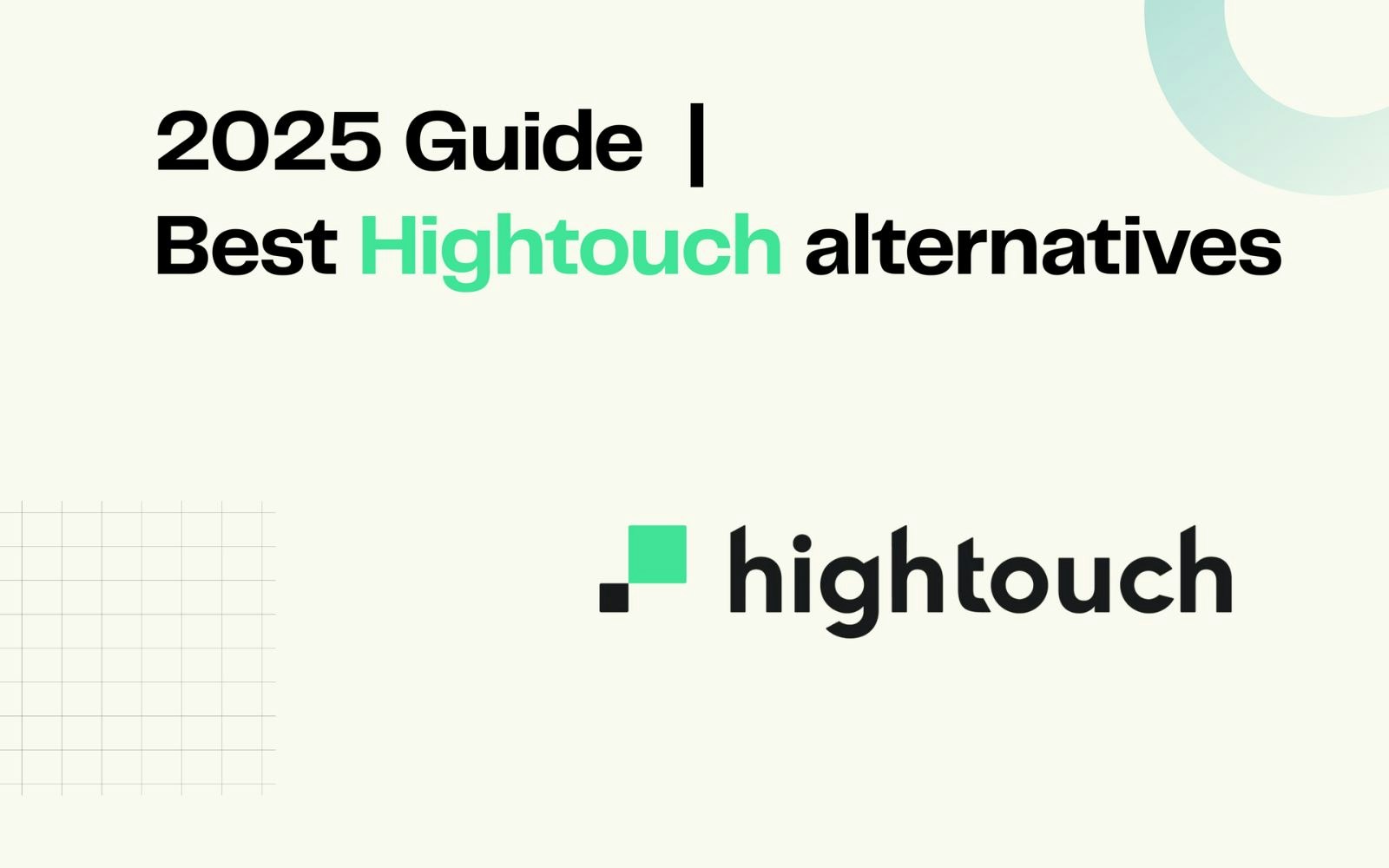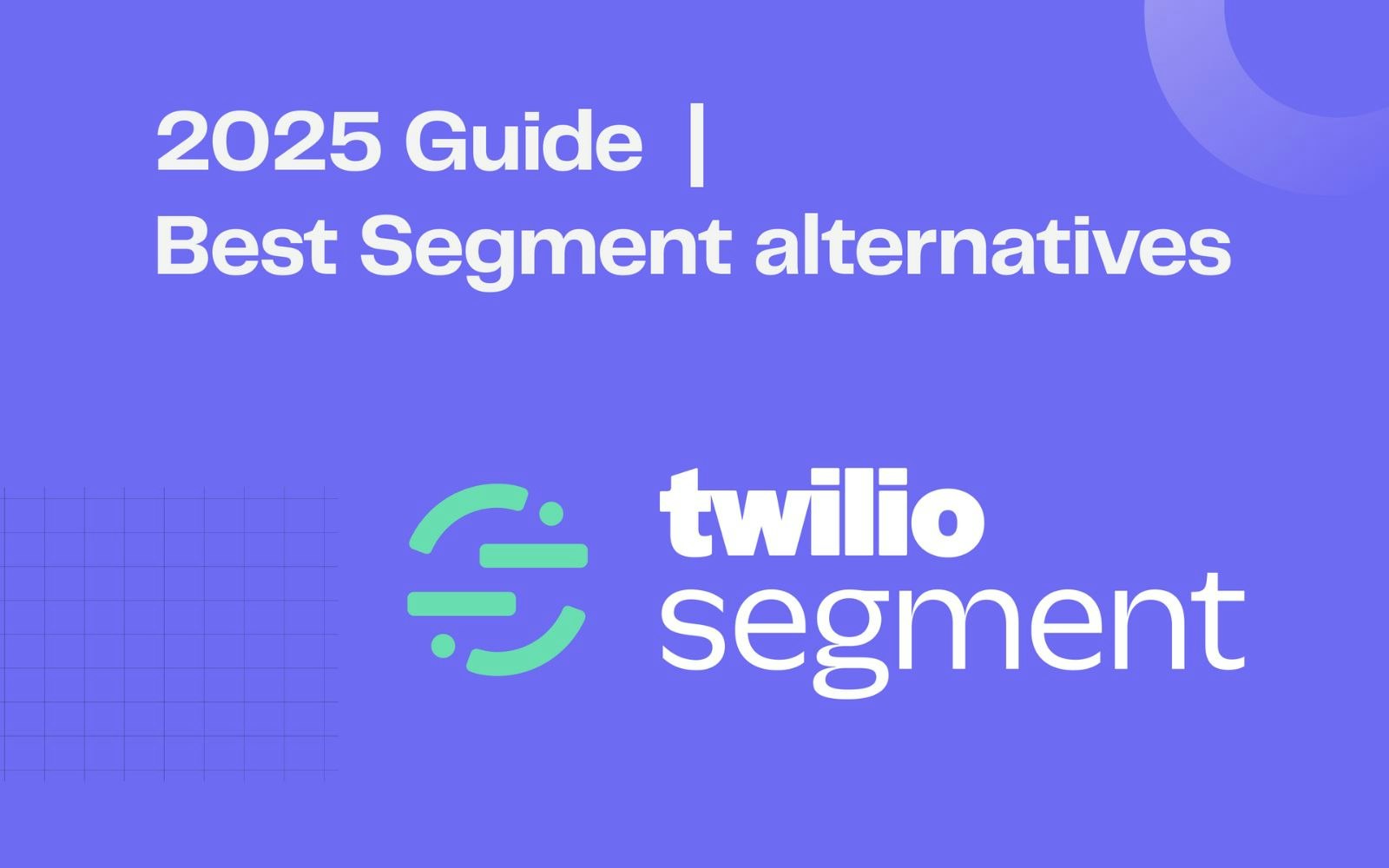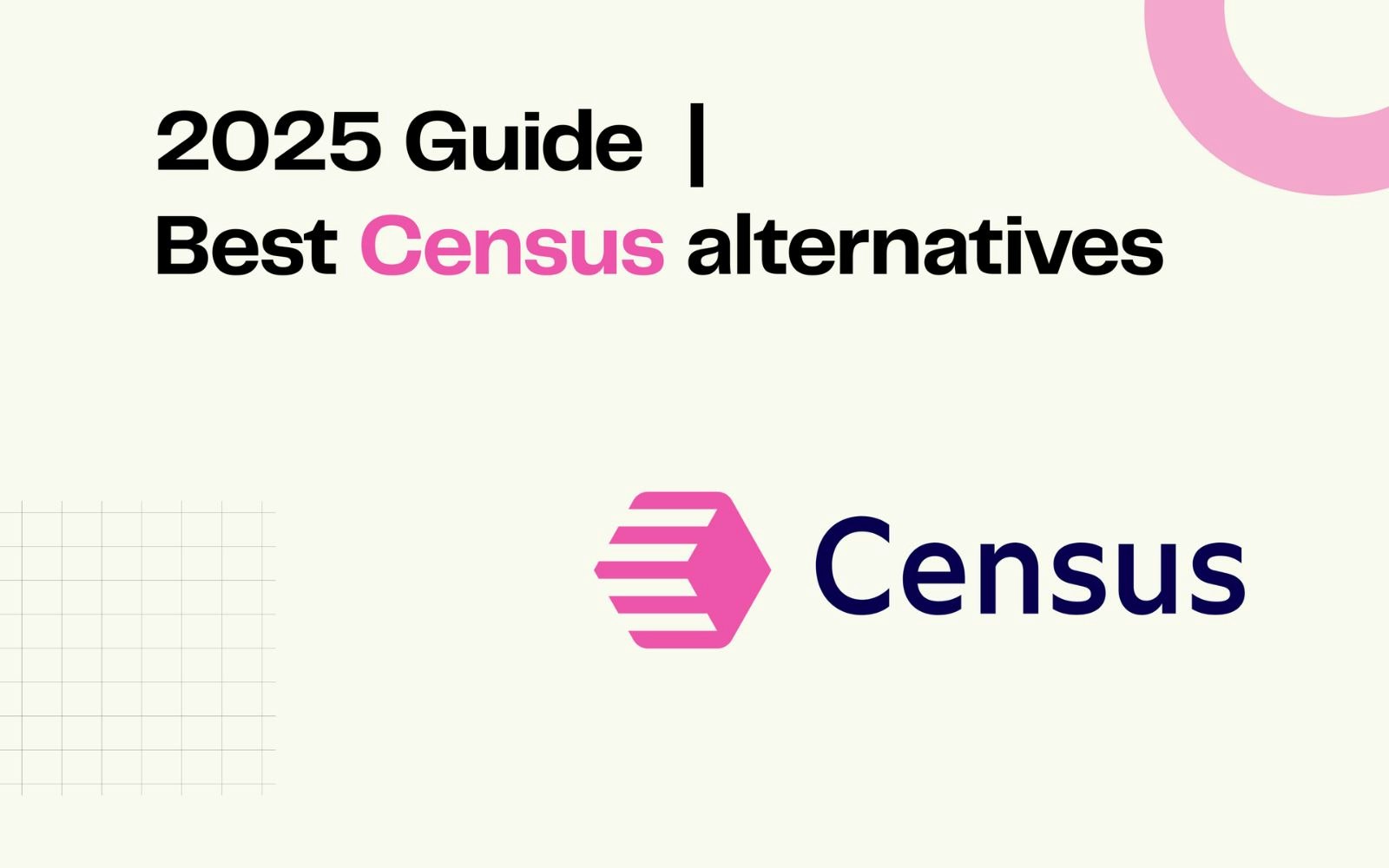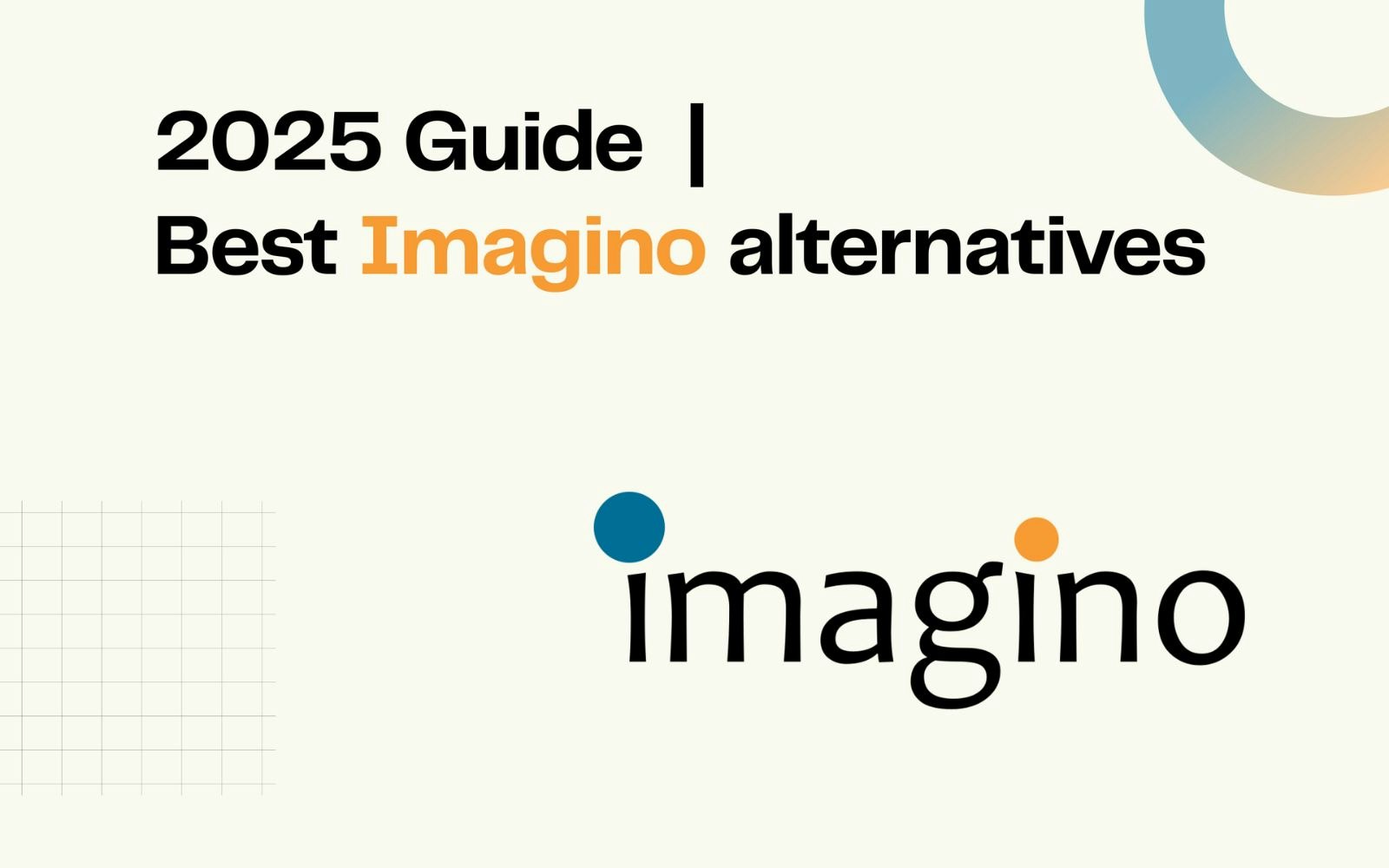In an increasingly competitive digital environment, the use of customer data has become essential to stay competitive and effectively connect with its audience. Customer Data Platforms (CDP) have been praised for several years as THE solution to collect, consolidate, and centralise customer data, analyze and segment it to then activate it in various marketing solutions.
In recent years, a shift towards a “composable” CDP architecture, which integrates seamlessly into a company’s existing technical stack (particularly their data warehouse), has been observed in the market. Among the players in this emerging category, Hightouch has managed to capture significant attention as a partner of many leading businesses seeking top-notch data management solutions.
But what alternatives to Hightouch exist, and what differentiates them?
👉🏼 In this article, we look at most popular CDP alternatives, their features, and the advantages of each solution; so you can make an informed choice for your business.
What is Hightouch?
A brief history of Hightouch
Two of Hightouch’s founders met at Segment, already aware of the challenges of using customer data in marketing campaigns. At that time, they witnessed the rapid adoption of cloud solutions, particularly for data storage. They then decided to try to create a simple solution to help business teams use the data stored in data warehouses.
Hightouch is known for its best-in-class data integration capabilities, making it an essential tool for modern businesses.
At the beginning of the adventure, Hightouch was a Reverse ETL solution (data pipelines from a source to destinations), designed for data teams. Over time, Hightouch has been developed and now addresses both data teams needs (automating their data flows) and marketing teams needs (covering all use cases of a traditional CDP).
Hightouch is now what is called a “Composable CDP.” It is a solution that offers all the features and capabilities of a traditional CDP, but that integrates perfectly into the existing data infrastructure (instead of operating as a separate entity).
With Hightouch, companies can build omni channel journeys, amplify touch points with their customers while further personalising them, all to drive revenue.
👉🏼 More details on the difference between traditional CDP and composable CDP or check our one-pager detailing the differences!
👇
Traditional vs Composable CDP: what's the difference?
How does Hightouch work?
To start using Hightouch, you just have to connect a source that centralises all your customer data (most often, a data warehouse). Note that Hightouch offers a library of SDKs (“Hightouch Events”) facilitating the collection and storage of data in your data warehouse to complement the data you have already centralised.
Hightouch then allows you to consolidate and organise the data to create a 360° view of your customers, notably thanks to its identity resolution capabilities. This customer view is directly actionable thanks to Hightouch’s two flagship products:
Customer Studio: A suite of no-code features that allow you to build audiences and orchestrate campaigns
Reverse ETL: An activation platform that lets you sync your customer data with any destination (marketing, support, operations, etc.)
Note that Hightouch additionally offers several products to improve marketing operations:
Personalisation API: A “low latency” API that covers certain real-time use cases, such as personalisation
Match Booster: A solution offering third-party data to enrich your first-party data and boost matching rates in advertising platforms
Campaign Intelligence: A suite of analytics tools and an AI co-pilot to measure marketing campaign performance
It's also worth noting that Hightouch ensures the security and governance of your data, maintaining it within your existing infrastructure for optimal control and compliance.
Alternatives to Hightouch
In the rest of the article, we detail the main competitors of Hightouch, divided into different categories of CDP:
Composable CDPs, the closest alternative in terms of architecture
Infrastructure solutions, covering the full range of CDP use cases, but primarily aimed at data teams
Traditional CDPs
CRM suites
We recommend using a Composable CDP if you want to overcome the limitations of traditional CDPs (rigid data model, data duplication in a third-party database, time and difficulty of implementation, cost).
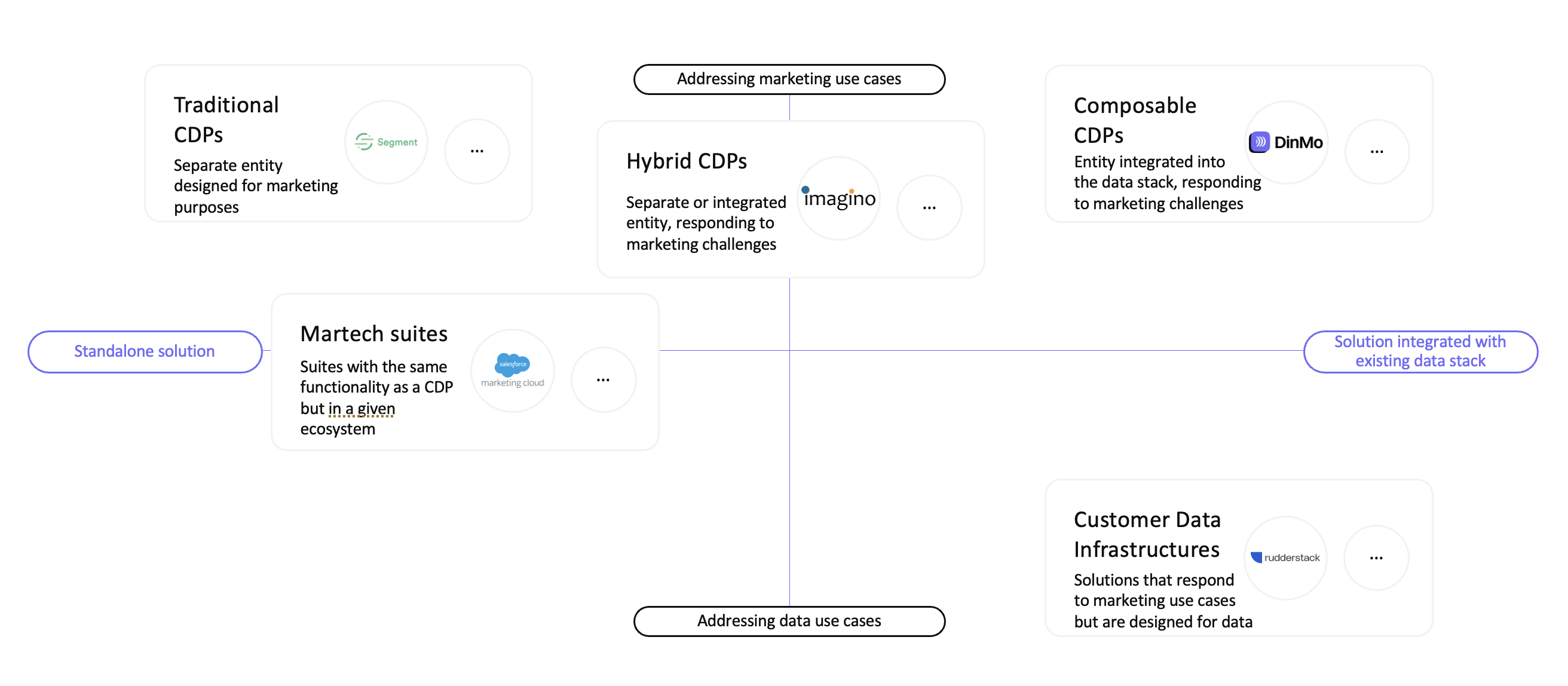
Categories of CDP
Alternative #1: Other Composable CDPs
DinMo
DinMo is a Composable CDP that offers essentially the same features as Hightouch:
A Reverse ETL engine to send data from a data warehouse to underlying marketing destinations. Real-time use cases are also handled.
A “Customer Hub” product, a suite of no-code features that allow you to build audiences and orchestrate campaigns.
An AI co-pilot that helps analyze customer data and measure campaign performance.
That said, DinMo outperforms Hightouch with its non-technical features (user-friendly interface, no-code segment builder, etc.), available for all plans. Designed first and foremost for business teams, DinMo is more user-friendly for marketers, bringing it closer to the interfaces of traditional CDPs.
Indeed, "Customer Studio" is only available in the "Enterprise" plans, becoming rapidly expensive for marketing teams if they want to cover their use cases independently.
Additionally, DinMo differentiates itself with its artificial intelligence and machine learning capabilities, enriching its 360° view available in the Customer Hub with predictive attributes (LTV, Churn, etc.)
If you want to learn more about DinMo, download our comparison with Hightouch and feel free to contact us!
👇
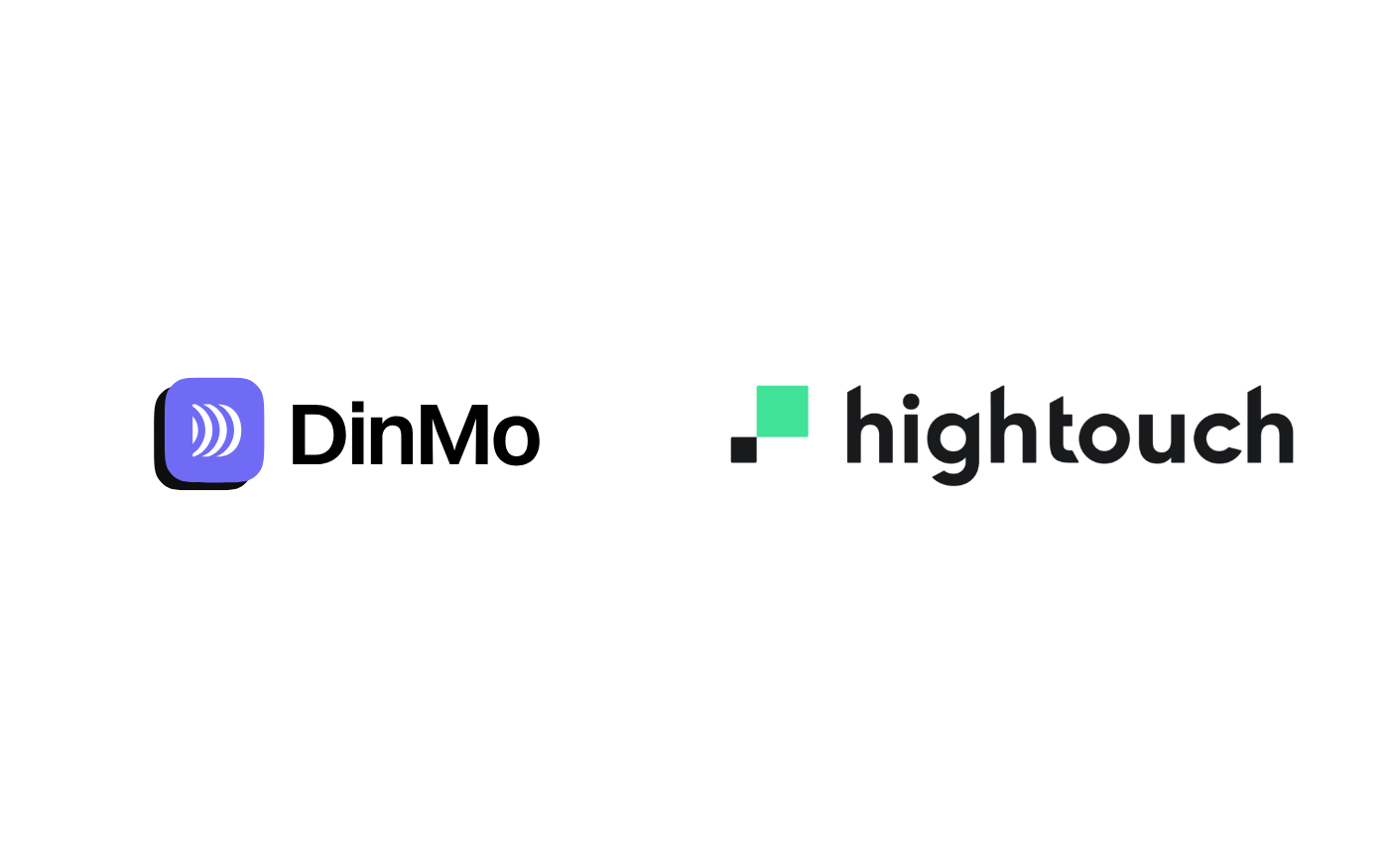
Key differences between Hightouch and DinMo
Census
Census, formerly a key competitor of Hightouch in the Reverse ETL space, now brands itself as a “Universal Data Platform,” suggesting it extends beyond typical Composable CDPs.
Like Hightouch, Census offers features that cover all CDP use cases (identity resolution, Reverse ETL, “Audience Hub,” etc.). Their pricing models are quite similar and the capabilities/performance of each are at the same level.
However, Census has expanded to a new set of features primarily aimed at technical teams, with new capabilities in data transformation and governance.
Alternative #2: Data Infrastructure Solutions
Rudderstack
RudderStack offers an infrastructure dedicated to the collection, processing, and storage of customer data through its various products (collection, Reverse ETL, identity resolution, etc.). It thus broadly covers the same use cases as Hightouch and CDPs in general.
However, while Hightouch focuses on both marketing and data teams, Rudderstack focuses solely on building and maintaining a customer data infrastructure (Customer Data Infrastructure, CDI).
Although RudderStack can serve traditional CDP use cases, marketing teams might find it challenging to use independently.
Treasure Data
Treasure Data, initially positioned as a Big Data platform, pivoted to CDPs after realizing that most of its use cases were for marketing teams.
To better address these marketing challenges, functions for unification, segmentation, and audience activation have been developed.
Despite this strategic shift, Treasure Data remains a technical solution for data management. It requires technical skills for use and data engineering for implementation and maintenance. The platform can therefore be more difficult to handle than Hightouch.
⚠️ Unlike Rudderstack, Treasure Data does not integrate seamlessly into a company's existing data infrastructure and duplicates data on its side.
That said, Treasure Data offers more advanced features in analytics and machine learning applications (especially for predictive).
💡 Note that if you are mainly interested in data activation, you can turn to Reverse ETL solutions, which allow you to send data from a data warehouse to final destinations, without other overlays (Customer Studio, identity resolution, etc.). Famous solutions like Grouparoo or Rivery offer general Reverse ETL capabilities.
Note that Composable CDP players (Hightouch, DinMo, Census) also offer the possibility to buy only the Reverse ETL product.
Alternative #3: Traditional CDPs
This category includes all the historical players in the ecosystem. Present for several years on the market, the features of these CDPs are sometimes very advanced and cover the entire scope of Hightouch, sometimes even adding artificial intelligence capabilities.
However, these solutions are not flexible and do not allow for a “modular” CDP approach. Implementation is long and complex, and the solutions are very costly, even for basic use cases.
Segment
Segment was initially known and recognised for event tracking. Segment offered SDKs that companies could deploy on their website to track customer behavior.
Over time, new features were added to build their current CDP: a “Connections” module to move data from point A to point B, an identity resolution module, and especially a “Twilio Engage” product focused on using audiences to improve customer engagement.
Hightouch and Segment have essentially the same features. The main difference lies in the way data is stored: in your data infrastructure for Hightouch and in a separate database hosted by Segment in the second case.
mParticle
mParticle is a traditional CDP, initially specialised in mobile event collection. It now offers all the key features of a CDP: collection, storage, audience management, customisation, and even real-time use cases and predictive attributes thanks to its “Cortex” product.
The platform was designed as an alternative to Segment and is therefore very similar. However, mParticle tends to offer more powerful capabilities across all features.
⚠️ Both solutions are originally intended for a “technical” audience and may require some time to be adopted by marketing teams.
Alternative #4: CRM Suites
Aware of the growth of the Customer Data Platforms (CDP) market, more and more players such as CRM or Marketing Automation solutions are trying to market CDP modules.
These modules are often less mature and generally offer fewer features than traditional CDPs. However, they allow for a quick return on investment due to a shorter implementation time and the ability to deploy the first use cases in a few weeks.
Be careful though:
They are generally less effective in terms of data security and governance.
Changing CRM / Marketing Operations tools also involves changing CDP, which can lead to a long and costly project again.
They are generally less mature and therefore less effective in terms of proposed features.
If you want to learn more about DinMo and its advantages over Hightouch, feel free to contact us! ☕️












